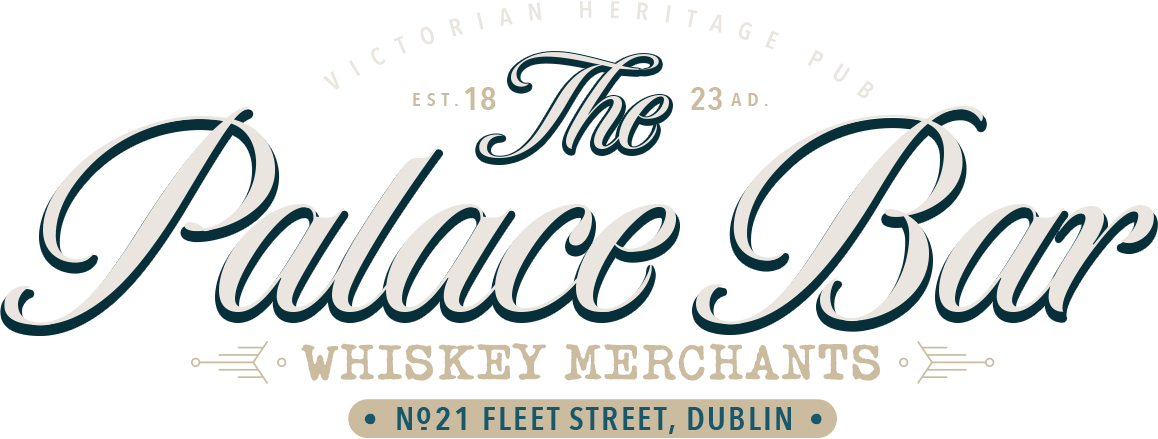
Individual Guinness Labelling.
Guinness began issuing individual labels with the printed publican’s name back in 1896. The harp trademark, based on the Brian Boru harp, the Guinness word and the Arthur Guinness signature were all featured on the original labels with the first recorded label recipient at Clarke’s Pub of Capel Street. These new labels caused quite a commotion within the Dublin licensed trade as every house wanted to showcase their own label named product. In those days, Guinness was delivered in hogsheads and each house did their own bottling, corking and labelling. Liam Aherne vividly recalls hogsheads of Guinness being delivered by horse and dray to the Palace. The deliverymen would give the horse a nosebag while tying the horse to the lamppost.
The first Palace Bar labels were issued in the name of Patrick Hall, 21 Fleet Street. It was Patrick Hall who commissioned the splendid Victorian jewel you see before you today. Soon afterwards Guinness labels were issued in the name of Murray & Co, Grocers, Wine & Tea and Spirit Merchants who, at the turn of the 20th century, conducted a busy grocery trade here in addition to their pub business. By 1910, Guinness standardised the coding on labels so that the date of printing could be more easily deciphered.
By the 1920s the name of Tipperaryman, George Ryan, was seen above the Palace Bar door and on the Guinness stout labels. In 1943 new Guinness labels were ordered in the name of Bill Aherne, the ‘mountainy man from Rearcross’ in Tipperary. For the next 25 years until 1968, when Guinness stopped placing publican’s names on bottled stout, the Palace Bar had their own individual labels.
For 170 years of its existence Guinness felt no obligation to advertise.
However, by the late 1920s, branding had really become fashionable and in 1929, the head of the Guinness family agreed that the brand should advertise - on one condition, that the quality of the ads would match the quality of the beer. In this regard, they were extraordinarily successful in securing the talents of John Gilroy, a genius of design and a ‘polymath of the painting world.’
Following a visit to a zoo, Gilroy came up with the ingenious inspiration of using zoo animals for his ‘My Goodness, My Guinness’ advertising campaign. Among the animals chosen were a sea lion, penguin, toucan, kangaroo and crocodile. All these animals appeared quite unruly and beyond the control of the hapless zookeeper, which was a caricature of Gilroy himself. From the public’s perspective, they simply couldn’t get enough of this campaign.
Today, the ‘My Goodness, My Guinness’ series is a prestigious collector’s item and is sold all over the world. And quite a few can be found in the Palace Bar.
